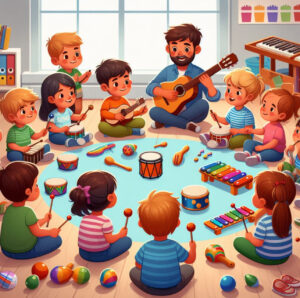
Creative Ways to Engage Students in Learning
How do you engage your students with creative and fun activities? Are you looking for ways to make your lessons more enjoyable for your students? Do you want to spark their imagination and curiosity while teaching them skills and concepts? Many teachers need help finding creative and fun activities that engage their students and enhance their learning.
Today, you will learn some ideas and examples of using creative and fun activities in your classroom based on research and teaching experiences. These activities are not only entertaining but also educational and meaningful. Also, they can help you achieve your learning objectives while creating a positive and collaborative learning environment.
Why Use Creative and Fun Activities?
Indeed, creative and fun activities are not just for fun. They have many benefits for both you and your students. Some of them are the following:
- Increase student motivation and interest. When students are bored or disengaged, they are less likely to learn effectively. On the other hand, when students are excited and curious, they are more likely to pay attention, participate, and remember what they learned.
- Foster student creativity and innovation. In addition, creativity is a valuable skill in the 21st century. It helps students solve problems, think critically, and express themselves. Also, creative and fun activities can encourage your students to use their imagination, experiment with different ideas, and create original products or solutions.
- Promote student collaboration and communication. Many creative and fun activities involve working in groups or pairs. Besides, it allows students to interact with each other, share their opinions, listen to different perspectives, and cooperate to achieve a common goal. It should be noted that these are essential skills for social and academic success.
- Cater to different learning styles and preferences. Not all students learn the same way. Some prefer visual aids, some prefer auditory input, some prefer hands-on experiences, and some prefer a combination of these. Unquestionably, with creative and fun activities, you can appeal to different learning styles and preferences and let every student access the content and enjoy the process.
How to Use Them?
There are many ways to use creative and fun activities in your classroom. You can use them as warm-ups, icebreakers, reviews, assessments, or extensions. Also, use them to introduce new topics, reinforce existing knowledge, or challenge your students to apply what they learned. Furthermore, utilize them to support your core curriculum or to explore cross-curricular connections.
The key is to align your activities with your learning objectives and outcomes. Consider your student’s age, level, interests, and needs. Also, provide clear instructions, feedback, and support for your students. You can check the examples of creative exercises that you can utilize in your classroom below:
- Storytelling is a powerful way to engage students and develop literacy skills. Use stories to teach vocabulary, grammar, comprehension, writing, and speaking. Besides, you can use them to teach values, culture, history, and science. Ask your students to read, listen to, watch, or create stories using different media and formats. For example, you can ask your students to compose a narrative based on a photo or a prompt or to retell a story using puppets or props.

- Art is a great way to stimulate your students’ creativity and expression. You can use art to teach colors, shapes, numbers, letters, and patterns. Moreover, you can use art to teach emotions, feelings, senses, and perspectives. Similarly, ask your students to draw, paint, collage, sculpt, or design using different materials and tools. Specifically, ask your students to paint their favorite animal or character or to create a poster or a logo for a project or a topic.

- Games are fun and interactive ways to engage your students and reinforce their learning. Utilize games to teach vocabulary, grammar, spelling, math, logic, and strategy. Also, let games work to teach teamwork, cooperation, competition, and sportsmanship. In the same way, ask your students to play board, card, dice, word, or online games with various rules and variations. For instance, let them play bingo or hangman with words related to a topic or a theme.

- Experiments are exciting and hands-on ways to engage your students and develop their scientific skills. Use experiments to teach concepts, principles, facts, and phenomena related to science and nature. Let the experiments teach your students inquiry skills such as observation, prediction, hypothesis testing, data collection, analysis, and conclusion. Likewise, let them conduct simple or complex experiments using different materials and methods. To illustrate, you can ask them to make a volcano or a rainbow using household items.

- Drama is a fun and expressive way to engage your students and develop their language and social skills. Apply it to teach dialogue, narration, characterization, plot, and setting. Besides, you can use drama to teach emotions, feelings, gestures, and body language. Let them act out scenes, stories, or situations in different roles and scenarios. Specifically, ask them to perform a skit or a play based on a book or a movie.

- Music is a joyful and relaxing way to engage your students and develop their musical and cultural skills. Use it to teach rhythm, melody, harmony, and tempo and to teach genres, styles, instruments, and composers. You can let them listen to, sing, play, or compose music using different media and formats. For example, ask them to learn a song or a rhyme related to a topic or a theme.

Conclusion
These are just some creative and fun activities you can use in your classroom. There are still more that you can explore and adapt according to your needs and preferences. The important thing is to have fun with your students and make learning an enjoyable experience for everyone.
If you have any questions or comments on how to engage your students with creative and fun activities, feel free to leave them below. Thanks for reading, and I’ll see you at the next one!



